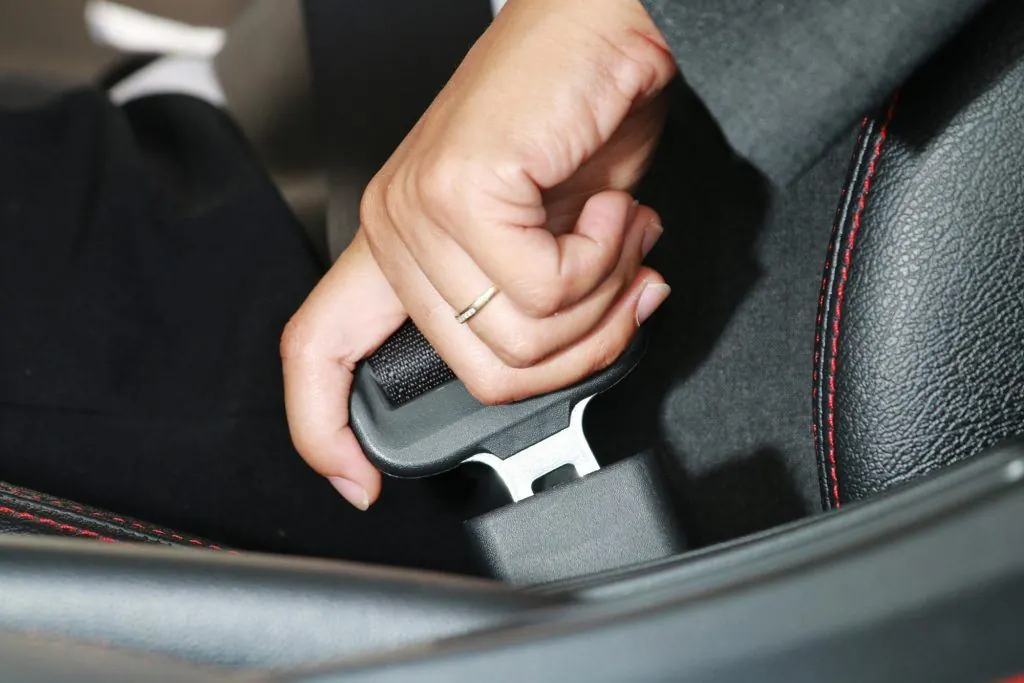Lap Belts: Cause and Effect
I’m Ed Smith, a Sacramento Personal Injury Lawyer. Buckling up your seatbelt when you get into a car is the best way to prevent injuries in case of an accident. While this is the law, there was a time when seatbelts were not required in motor vehicles. Like airbags, these safety devices came about after cars were invented. Back in the day, cars moved so slowly that injuries in car accidents were rare. However, as technology advanced and people can move from place to place more quickly, serious injuries and car crashes have become more common. Seatbelts were put into motor vehicles to prevent some of these injuries.
Introduction of Lap Belts
The reason why injuries, such as blunt abdominal trauma, often resulted from car crashes is that of the conservation of momentum. Before a car collided with another object, it was moving at high speed. While the car stopped on impact, the people inside the vehicle were still moving at this high speed, causing them to hit the interior of the car. To restrain passengers, the lap belt was introduced into motor vehicles. Similar to a seatbelt often worn on airplanes, the lap belt was meant to strap around a person’s waist, helping to restrain him or her from sudden changes in a direction associated with a car crash.
Seatbelt Syndrome
The introduction of the lap belt did lead to a sharp decline in the death rates from auto accidents. Because the lap belt restrains a person from moving forward, this often protected the chest and head of a person from sustaining severe trauma, such as a traumatic brain injury. However, other unintended consequences occurred as well. While people did survive car accidents, they ended up with a series of injuries called “seatbelt syndrome.” This syndrome was aptly named because of the effect of the lap belt on people’s bodies. While the lap belt protected people from moving forward at high speed, the head and the chest of the person were still free to move despite the lower body being held in place. This restraint led to a constellation of the stomach and small bowel injuries. The tearing of their intestines often required surgical procedures to prevent septic shock and death.
Prevention of Seatbelt Syndrome
Because of the frequency of seatbelt syndrome, it was clear that something needed to be changed. Changes in seatbelt usage led to a drop in both death and injury rates associated with auto accidents. The shoulder belt was added to the lap belt, which helped restrain the upper body from moving while the lap belt continued to suppress the lower body. The combination of these two safety devices ultimately led to a sharp reduction in the development of seatbelt syndrome and a higher safety rate overall. Of course, the efficacy of the shoulder belt is still predicated on it being manufactured and used correctly. Sometimes, people are too small or short to use a shoulder belt the right way (notably, children). Therefore, children should be placed in car seats or booster seats until they are both tall enough and heavy enough to use a shoulder belt in the right way.
Sacramento Personal Injury Lawyers
I’m Ed Smith, a Sacramento Personal Injury Lawyer. While seatbelts make cars and other motor vehicles safer, it is essential to make sure that these safety devices operate correctly. If you or a family member has been injured in a car accident, call me at 916) 921-6400 or (800) 404-5400 for free, friendly advice.
I’m a member of the Million Dollar Advocates Forum.
You can read through our verdicts and settlements cases.
Please view Avvo, Yelp, and Google to see our past client reviews.
Photo by depositphotos.com
:dr cha [cs 632] cv

